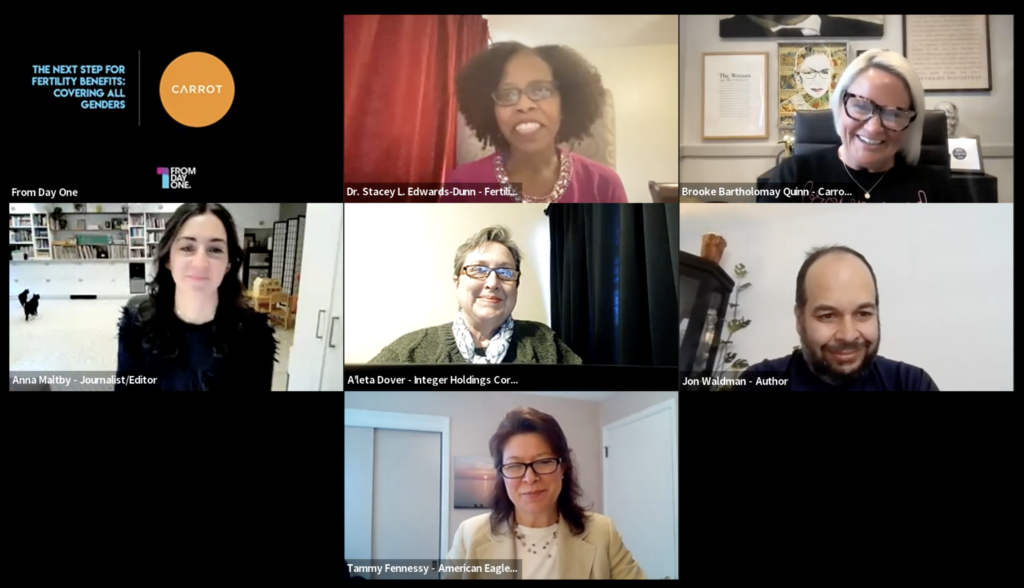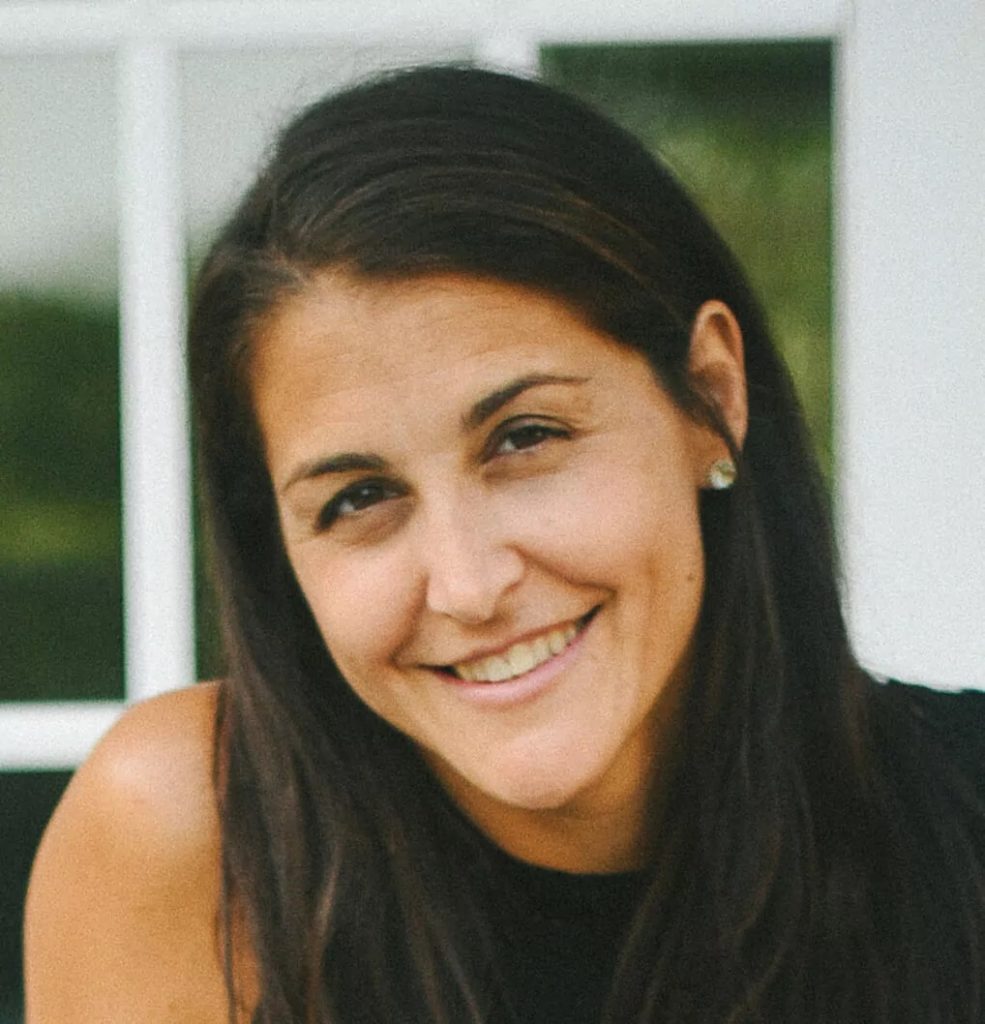The Next Step for Fertility Benefits: Covering All Genders


Infertility is on the rise, and employers are taking notice that their workforce needs support along the sometimes-rocky road toward building a family. One 2021 survey found the number of large employers offering “family-building benefits” (which includes fertility treatments and adoption support) grew by 8% in the last year. And according to another survey, 68% of adults would switch jobs to gain fertility benefits.
But traditionally, discussions about fertility and even fertility-related benefits have defaulted to heteronormative and female-focused assumptions, essentially ignoring the experiences of male-factor infertility, single would-be parents, and many LGBTQ+ relationships. As workplaces work toward becoming more inclusive, looking at which employees their fertility benefits include—and, intentionally or not, exclude—is a critical step, experts say.
It’s a process Tammy Fennessy, director of benefits for American Eagle Outfitters, knows firsthand. After being approached a few years ago by a handful of employees about financial barriers in the fertility process, Fennessy realized just how inequitable her company’s offerings had been: “We’re a very inclusive company, but there was zero coverage for men experiencing infertility. Every part of me was screaming, ‘Wow, this is not right!’” she said. “We started immediately looking at what solutions we could put into place to support parents, in any way you wanted to become a parent—it didn’t matter if you’re LGBTQ+, male, female, transgender.”
Fennessy discussed her experience alongside five other experts in “The Next Step for Fertility Benefits: Covering All Genders,” a webinar hosted by From Day One, for which I served as moderator. Also on the panel were Jaime M. Knopman, M.D., reproductive endocrinologist and director of fertility preservation for CCRM Fertility; A’Leta Dover, senior manager of benefits and well-being for Integer, a medical-device manufacturing company; the Rev. Stacey Edwards-Dunn, PhD, founder of Fertility for Colored Girls; Jon Waldman, author of Swimming Aimlessly, a memoir and guide based on his own experience with male infertility; and Brooke Bartholomay Quinn, chief customer officer of Carrot, a leading provider of employee fertility benefits.
What Are Inclusive Fertility Benefits?
To understand the importance of inclusive fertility benefits, it’s helpful to understand the world of family-building options in general. Traditionally, the panelists noted, people associate “infertility” with a married, cisgender, heterosexual couple having trouble conceiving because of an issue with the woman’s fertility. But even within couples that fit that criteria, male-factor infertility is rising sharply. About one third of infertility cases among straight couples stem from male factors, one third from female factors, and another third by both parties or unknown causes, but typical fertility benefits may not cover diagnostic tests or fertility treatments for men. Waldman said: “Men are really left out of the equation.”
On top of that, many fertility plans require a certain amount of time of trying to conceive without success for employees to receive a diagnosis of infertility that qualifies them for coverage—which doesn’t at all apply to prospective single parents or those in a same-sex partnership, Dr. Knopman noted. “How are they going to [try for six months or a year]? They don’t have the opposite gamete! That makes absolutely no sense to me.”

Benefit providers like Carrot take that diagnosis requirement out of the equation and aim to cover all paths toward parenthood, be it fertility care (including egg and embryo freezing), donor-assisted reproduction, or adoption, Quinn said. “When companies are thinking about their fertility benefits, I think it’s really [important] to go back to that word of inclusivity. There’s so many different paths, so really make sure the benefit is going to help address family-forming across your entire employee workforce.”
The Emotional Factors
Though the subjects of infertility and the family-building challenges of LGBTQ+ people are becoming less taboo and more support resources exist now than in the past, these experiences can still be extremely difficult emotionally, the experts said. Rev. Edwards-Dunn, who experienced infertility herself, said, “I know firsthand that the mental-health challenge that comes with [infertility] is very high. Infertility is isolating and can be very devastating. It impacts marriage and finances.” Having affordable fertility coverage, as well as coverage for emotional support, which is baked into programs like Carrot, is one thing employers can do to show support to their workers along their family-building journey, Rev. Edwards-Dunn said. Another is instituting policies that lend flexibility to those who need frequent medical visits during their fertility process, as well as time off after a pregnancy loss or unsuccessful IUI or IVF cycle, she said.

Maintaining an employee’s privacy is an important part of this equation as well, Waldman noted. “I’ve taken advantage of employee-assistance programs that are completely anonymous,” Waldman said. “It’s hard for men to talk about this, and those are the perfect solution.”
How to Push the Conversation Forward
As well-intentioned as a company may be, more traditional workplaces and leadership teams may hesitate to discuss topics like infertility and inclusive family-building, Dover said. The strategy she recommends: focusing the conversation on fairness. “I told my manager [a non-inclusive benefit program] isn’t fair, and it isn’t right. And fairness is one of Integer’s key values. He said, ‘You’re right. It isn’t,’’’ Dover said.
Know that you have power to drive change for your benefits provider as well, Dover advised. Her company was using a national health-insurance carrier, and when she noticed the heteronormative language in their policy, she called to ask about it—and pushed them to consider making a change to include more employees. Even if you individually don’t cause a provider to change their language or policies, your voice makes a difference.
In the end, providing comprehensive and inclusive fertility benefits is a way to align your offerings with your company’s values and increase employee engagement, Dover said. “That’s a holistic thing. It encompasses benefits, how your manager treats you, and [fertility benefits] would very much be part of that.”
Anna Maltby is an editor, content strategist, and exercise specialist. She has served as executive editor of Elemental, the health and well-being publication on Medium, as well as deputy editor of Real Simple and Refinery29.
The From Day One Newsletter is a monthly roundup of articles, features, and editorials on innovative ways for companies to forge stronger relationships with their employees, customers, and communities.